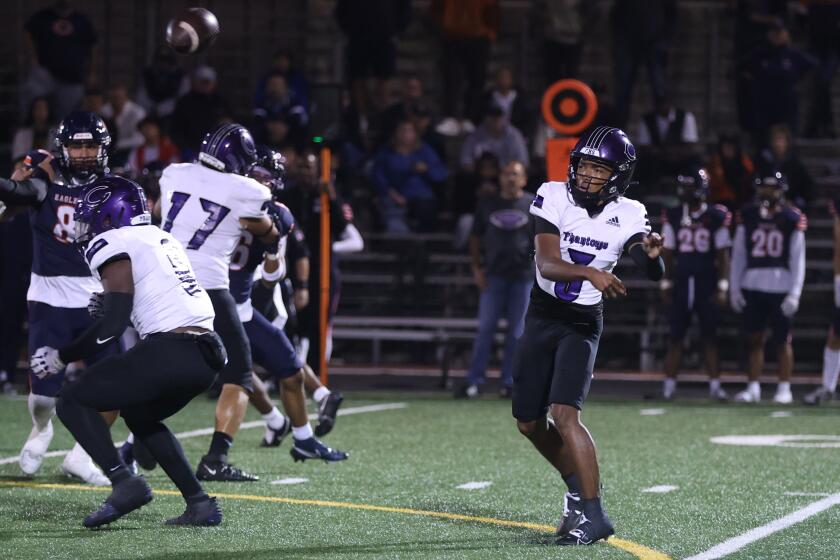Timeout Exactly What Safin Needs
- Share via
MELBOURNE, Australia — The controversy over injury timeouts was rekindled at the Australian Open at a most crucial juncture in today’s semifinal between seventh-seeded Tommy Haas of Germany and No. 9 Marat Safin of Russia.
Sixty-nine minutes into their match--down a set and a service break--Safin called for a trainer at the changeover, using a three-minute injury timeout on a hot humid day here. He complained there was no reaction in his legs, had his legs massaged and took Vitamin C and aspirin. Haas led, 7-6 (5), 3-2, when Safin made his move, and the development turned the momentum of the match.
Safin promptly got the service break back in the next game, as an unnerved Haas double-faulted twice and appeared to be upset about the string tension of his racket. Australian television commentators asserted the injury timeout was improperly used.
The potential abuse of injury timeouts came under scrutiny the second day of the tournament when Spaniard Alberto Martin used one in the middle of a tiebreaker against Australian Lleyton Hewitt in his first-round upset, saying he was cramping. Amid the furor, Grand Slam officials planned to examine the issue.
Unlike the Martin match, Safin took the timeout on a changeover. But his problems appeared not to be related to an injury, rather, it looked like severe fatigue. The treatment seemed to revive Safin, who had two set points in the 10th game of the second. Haas saved them both and stayed alive. In the second tiebreaker, Haas won the first three points before Safin rallied, taking the set, 7-6 (4), leveling the match as this edition went to press.
Earlier, Safin was the one with the fraying temper. After he lost the first set in a tiebreaker, and his serve to trail, 1-2, in the second, Safin smashed his racket after hitting a backhand out.
Safin, who will turn 22 on Sunday, was trying to reach his first Slam final since winning the U.S. Open in 2000.
Haas, 23, has not been in a Slam final as his best previous finish was the semifinals here three years ago.
Already waiting in the final was No. 16 Thomas Johansson of Sweden, whose previous best Grand Slam showing came when he twice reached the U.S. Open quarterfinals in 1998 and 2000.
Johansson held his nerve in a tense semifinal against No. 26 Jiri Novak of the Czech Republic, 7-6 (5), 0-6, 4-6, 6-3, 6-4, a match that lasted nearly three hours.
“I was really nervous before the match,” Johansson said. “I never played in a Grand Slam final. I was really tight, and in the whole match, I was just fighting. I will be even more nervous before the final.”
More to Read
Go beyond the scoreboard
Get the latest on L.A.'s teams in the daily Sports Report newsletter.
You may occasionally receive promotional content from the Los Angeles Times.











